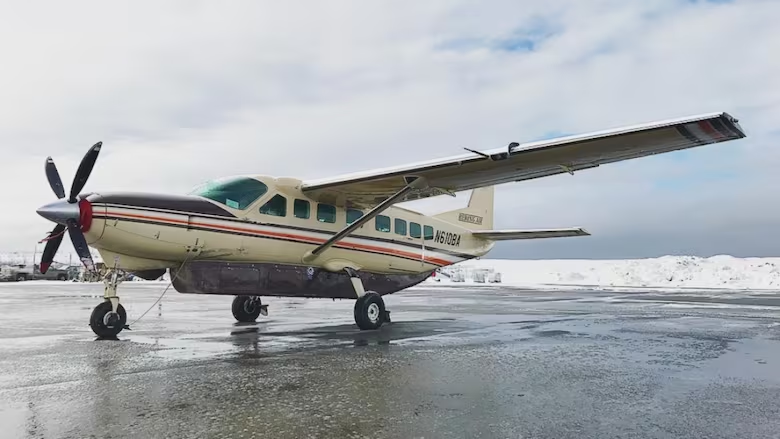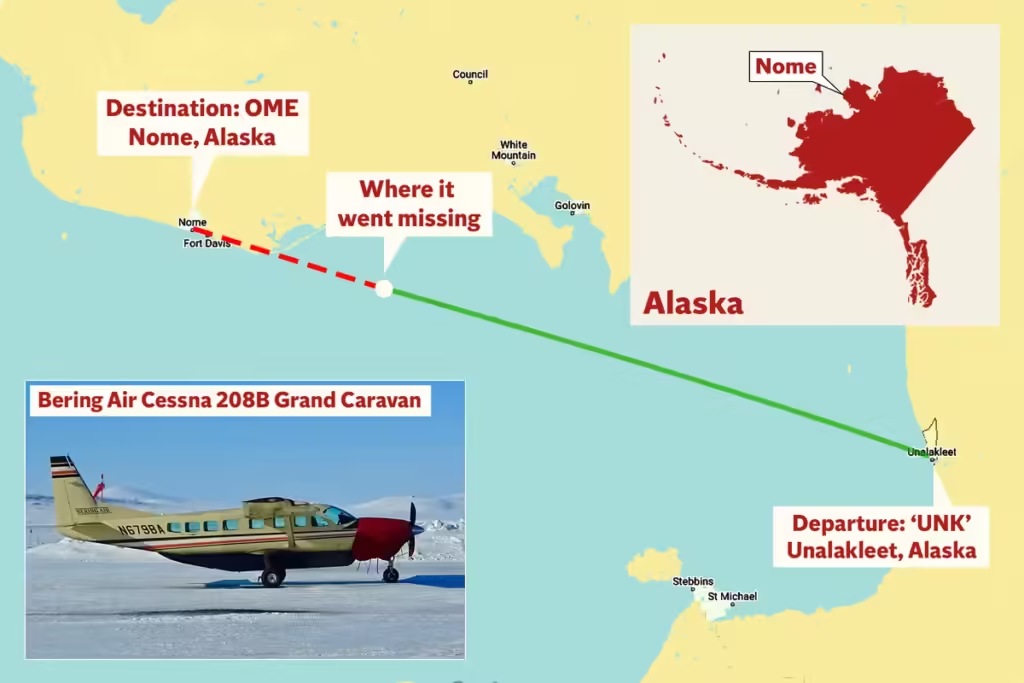
Alaska’s vast, rugged wilderness—a land of glaciers, dense forests, and towering mountains—is both breathtaking and unforgiving. This week, that duality came into sharp focus when a small commercial plane carrying 10 people vanished from radar, sparking a multi-agency search effort led by the U.S. Coast Guard.
As rescue teams brave harsh conditions to locate the missing aircraft, families cling to hope, and questions swirl about the challenges of flying in America’s “Last Frontier.”
The Incident: What We Know So Far
The aircraft, a twin-engine Piper PA-31 Navajo operated by a local charter company, departed from a remote airstrip near Lake Clark, Alaska, on Tuesday morning. It was scheduled to land in Anchorage, roughly 150 miles southeast, but lost contact with air traffic control 45 minutes into the flight. The plane carried nine passengers and one pilot, according to Alaska State Troopers.
Weather reports from the area indicate cloudy skies, light rain, and moderate turbulence at the time of the disappearance—common conditions in a state where weather shifts rapidly. The pilot did not send a distress call, leaving investigators with little to go on. “It’s like the plane just disappeared into thin air,” said a spokesperson for the National Transportation Safety Board (NTSB), which is assisting in the investigation.
Search and Rescue: A Race Against Time

Within hours of the Alaska plane going missing, the U.S. Coast Guard launched a major search operation, deploying helicopters, fixed-wing aircraft, and a cutter to scour the suspected crash zone southwest of Anchorage. The Alaska Rescue Coordination Center, Civil Air Patrol, and local volunteers have also joined the effort, covering an area roughly the size of Connecticut.
Rescuers face immense challenges. Alaska’s terrain is a patchwork of jagged peaks, dense forests, and icy rivers, making ground searches nearly impossible in many areas. To compensate, teams use infrared cameras to detect heat signatures, sonar for underwater searches, and satellite data to narrow the scope. “Every hour counts, especially in cold environments where hypothermia can set in quickly,” explained Coast Guard Lt. Commander Sarah Mitchell. “We’re combing every ridge, valley, and body of water.”
Alaska averages 100 aviation accidents annually—a high rate attributed to its reliance on small planes for transportation and its volatile weather. However, survival stories are not uncommon. In 2020, a cargo plane crashed near Fairbanks; all five passengers survived for two days in subzero temperatures before being rescued.

NEW WEB-SERIES RELEASE ON NETFLIX : Apple Cider Vinegar Netflix Series: A Deep Dive into the Shocking True Story
Why Alaska’s Skies Are Uniquely Dangerous
Alaska has six times as many pilots per capita as the rest of the U.S., and small planes are the lifeline for many communities unreachable by roads. But the state’s aviation risks are well-documented:
- Weather Whiplash: Pilots often navigate sudden fog, snowstorms, or high winds. The term “ceiling and visibility unlimited” (CAVU)—a pilot’s dream conditions—is rare here.
- Remote Terrain: Over 80% of Alaska’s communities lack road access, forcing reliance on air travel. Runways are often short, unpaved, or nestled between mountains.
- Aging Fleet: Many aircraft servicing rural areas are decades old, though strict maintenance rules aim to mitigate risks.
“Flying in Alaska requires a different skill set,” said veteran pilot Jim Tweto, star of the Discovery Channel’s Flying Wild Alaska. “You’re not just fighting weather; you’re reading glaciers, wind patterns, and animal movements. It’s like chess with the elements.”
The Human Toll: Families in Limbo
Behind the statistics and search grids are 10 families clinging to hope. Social media has been flooded with pleas for information, while community centers in Anchorage have become gathering points for loved ones. “We’re praying for a miracle,” said one family member, who asked not to be named. “Alaskans stick together—we know how harsh this land can be, but we also know its resilience.”
Psychological experts note that prolonged uncertainty in missing-persons cases can traumatize families. “The mind oscillates between hope and despair,” said Dr. Emily Carter, a trauma specialist. “Support networks and timely updates are critical.”
Looking Ahead: Lessons and Hope
While the search continues, the incident underscores ongoing debates about aviation safety in Alaska. Recent advancements like GPS tracking and emergency locator transmitters (ELTs) have improved outcomes, but gaps remain. Advocacy groups push for better funding for rural airports and mandatory survival gear on flights.
For now, rescue teams remain focused on finding the missing plane. “We’ve seen survivors against all odds,” said Lt. Commander Mitchell. “We won’t stop until we have answers.”
Conclusion: A Test of Resilience
Alaska’s wilderness demands respect, but it also inspires ingenuity and courage. As the search for the missing plane enters its critical phase, the collaboration between agencies, volunteers, and technology highlights humanity’s determination to overcome even the harshest odds. For the families waiting, every moment feels eternal—but in Alaska, hope is as vast as the land itself.
FAQs: Alaska Plane Crash
1. What happened to the plane?
A small commercial plane carrying 10 people went missing in Alaska after losing contact with air traffic control.
2. What type of aircraft was involved?
The missing aircraft is a twin-engine Piper PA-31 Navajo.
3. Where was the plane headed?
It was flying from a remote airstrip near Lake Clark to Anchorage, about 150 miles away.
4. When did it go missing?
The plane lost contact 45 minutes into its flight on Tuesday morning.
5. Who is leading the search effort?
The U.S. Coast Guard, assisted by the Alaska Rescue Coordination Center, Civil Air Patrol, and local volunteers.